Great design sometimes begins with rubbish

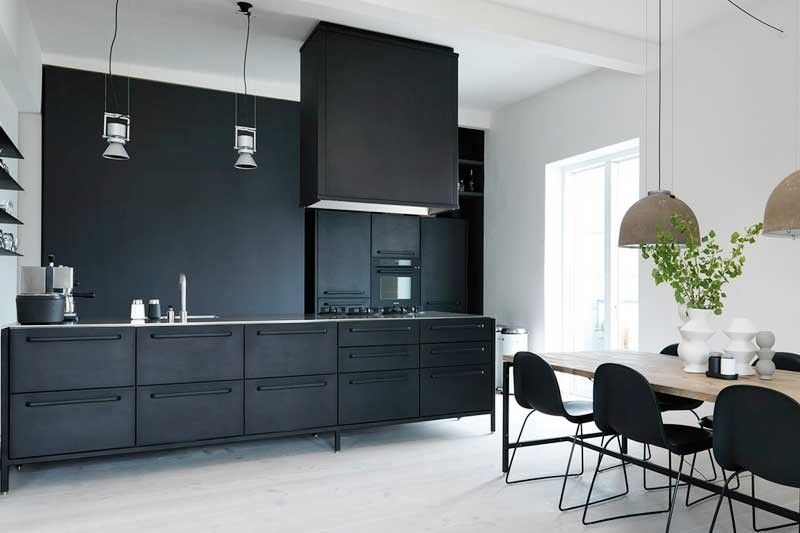
Danish design company Vipp started with just one product — a trashcan — and that’s all it produced for 50 years. Today, Vipp has the most modern accessories and furniture for your home.
It started with a trashcan. And for more than 50 years, the rubbish bin was all that Danish company Vipp produced.
Last week, it opened its first stand-alone showroom in Asia at Shangri-La at the Fort with collections encompassing kitchen, dining, bathroom, lighting, accessories and shelving.
Vipp chief designer Morten Bo Jensen starts the story in 1939 at the small town of Randers in Denmark. Company founder Holger Nielsen, then 25 years old, was a metal spinner and his wife Marie had just opened a hairdressing salon. She asked him to make her a trashcan for the salon, so he designed and produced a pedal bin for her, which he named Vipp.
“Holger’s design caught the attention of Marie’s customers, who were mostly doctors or dentists’ wives, who told their husbands to buy the bin because they thought it was quite cute and very functional,” says Morten. “So, for 50 to 60 years, the trash bins went to dentists’ clinics all over Scandinavia. No one quite knew of the Vipp brand but once they saw a picture of the bin, everyone knew what it was because they’d seen it in offices and hospitals. It was just a tool for business. Then in the ‘80s and ‘90s, there was a growing interest in design by the public and design stores started to grow in Europe, and they tried to push the product for domestic use.”
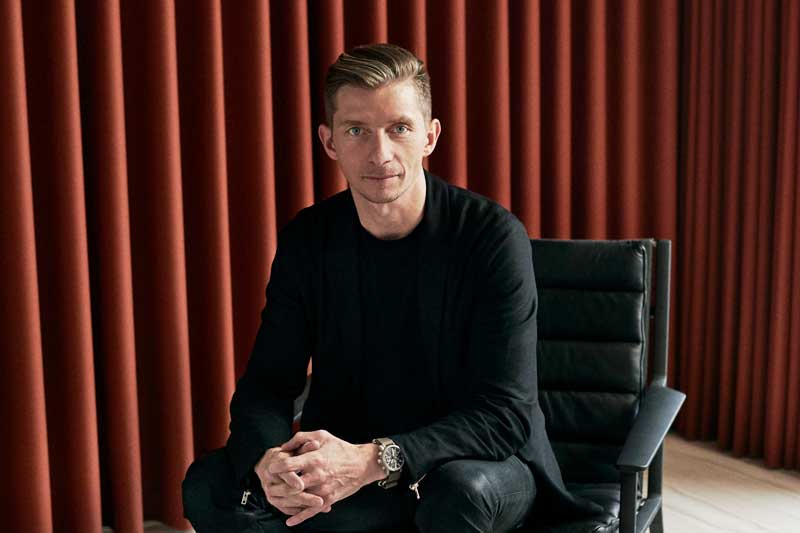
Vipp chief designer Morten Bo Jensen: “Time will tell what will become a classic. If you’re aware of the design elements that are influenced by the zeitgeist and try to disregard them, you have a better chance.”
It’s no ordinary trashcan. For one, it can last 50 years (with only the pedal that might need replacement after a decade or so) and it’s the kind of object that children inherit or one finds in vintage stores. Second, it retails for around 250 euros in Denmark. And third, it is truly a remarkable design that has lasted 78 years and is now more popular than ever — this time not just in clinics but in homes as well.
“It’s okay that it hurts a little when you buy it but it can last you forever,” the designer says of the price.
Which brings me to the burning question that comes to mind every time I see a great product designed decades ago and find that the origin is, indeed, Danish. What makes a design, particularly Danish design, timeless? Why is it, in the vast space that all these products occupy in homes, offices and stores, are we drawn to certain ones and not to others?
It’s a question that Morten has grappled with as well and none more than this particular everyday object — a receptacle of trash, rubbish, things you want to dispose of — clues us in on this mystery.
“It’s probably culturally anchored somehow,” he says. “I think Danish designers are so cautious about trying to find the essence of the product and very eager to use great craftsmanship. Those are the two basic foundations to make something last a very long time. Attention to detail, making something very efficient — those values are always in the minds of Danish designers. You can use this bin for 50 years, so you know it’s made from great material and it’s a pure joy to use every day. If you can do that with a trashcan, I think it’s amazing.”
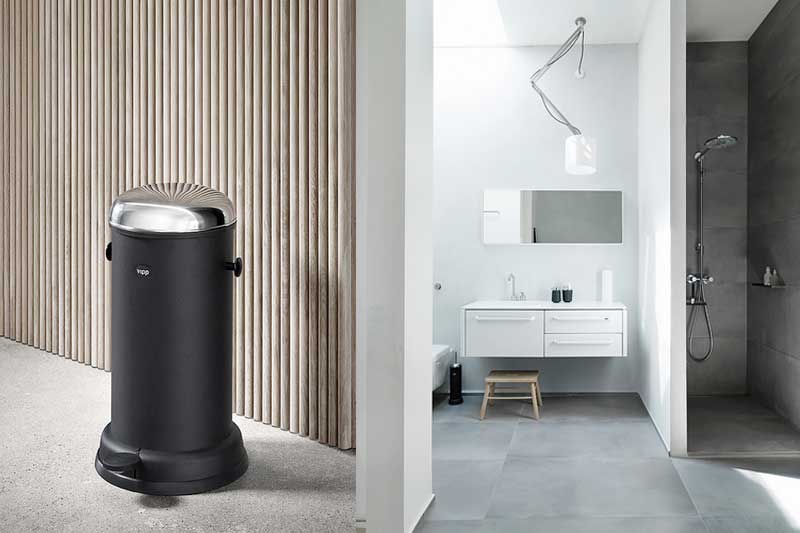
(Left)The trash bin that Holger Nielsen designed in 1939 for his wife Marie’s salon. (Right)Bathroom accessories and lighting by Jensen
Morten bought his first Vipp trash bin 14 years ago. He was then working for a bicycle company as a designer, having earned his master of science in industrial design from Aalborg University.
Two years later, he went to Vipp because “I was fascinated by the company. To put it very simply, I applied for a job in product development and we started talking about the potential of an expansion.”
But he points out with a laugh that there’s a downside to a product that lasts forever: your customers have no need to come back and buy another one.
By then, the company was being run by Holger’s daughter Jette Egelund and her children Kasper and Sofie. At the time, there were only two products in Vipp’s portfolio: the trash bin and a toilet brush designed by Jette.
Morten’s first design for Vipp was a nod to the company’s heritage: a laundry hamper with the same silhouette as Holger’s trash bin.
And in the next 12 years, the company has exploded with collections for the entire home. A gorgeous modular kitchen (which will inarguably take the company into the next century), lighting fixtures, bathroom and kitchen accessories, and even a prefab house whose interiors are equipped with Vipp products.
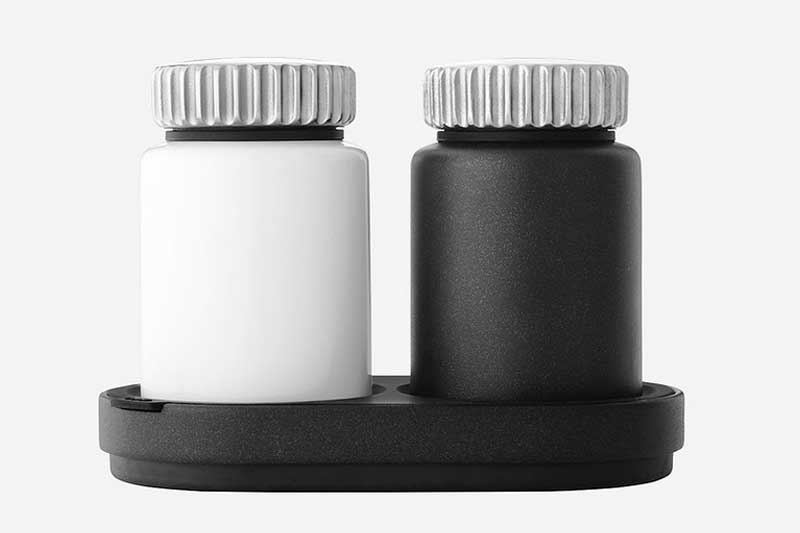
Salt and pepper mill set: “We spent an additional six months refining the sound (of the grinder). It’s that detailed.”
“Time will tell what will become a classic. If you’re aware of the design elements that are influenced by the zeitgeist and try to disregard them, you have a better chance. Otherwise they became icons of a time. But if you want something that people will appreciate for many years and keep it in production, then you need to disregard the zeitgeist a bit and put a lot of effort in refining the product.”
Through all these designs, Morten finds joy in what drew him to design in the first place. “It’s the process of materializing something. You imagine a thing that doesn’t exist yet and as a designer you’re able to transform it into something tangible. I love that.”
It’s no wonder that he is inspired by places that actually make these products real — in production facilities and factories. “All these machines are built as tools for the workers. They are great quality because they have to last a long time and take that daily wear and tear. All the digits and wheels and handles — I love to look at these elements.”
His perforated pendant lamp — starting as a flat sheet of steel and later bent into a conical shape — was inspired by an actual lamp on a machinery that turns metal. “All these perforations are something you often see in factories.”
Another design idea came to him through his sense of sight and hearing simultaneously, almost like an assault. He shows me a salt and pepper mill set and turns the grinder. It produces an unusual sound — something I have never heard a pepper mill make.
“It sounds like you’re turning the dial of a safe,” I say.
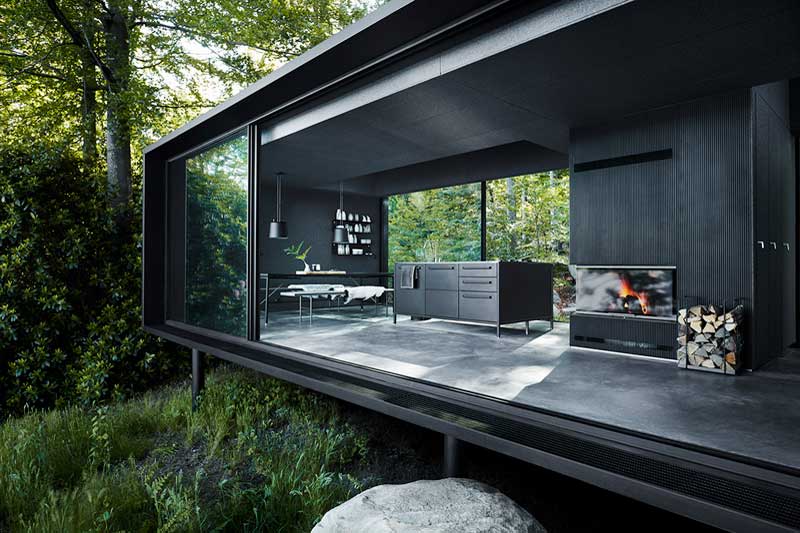
A 55-sqm. prefab house called Shelter by Vipp designer Morten Bo Jensen and furnished with Vipp products. It’s a prototype they placed in a forest and by lake near Kristianstad, Sweden. “We opened it as a hotel, so you can actually book it for a night. I can’t tell you how many requests we’ve received for it! We call this the human-battery recharger.”
He smiles, “That’s completely where the inspiration came from. You also have these dials on machineries that you need to adjust, and they produce these little clicks. We spent an additional six months on refining the sound of it, like German cars manufacturers spend a lot of time and money on designing the sound of the doors opening. It’s that detailed. Obviously, we had to find the right shape for the salt and pepper mills, and the sound was an additional layer of design. That goes into all our products.”
* * *
Visit the author’s travel blog at www.findingmyway.net. Follow her on Instagram and Twitter @iamtanyalara. Vipp’s showroom is located at Shangri-La at the Fort, BGC.



















